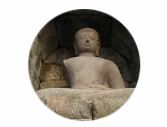Steve Wang, the deputy director of passive investment for Shenzhen-based Bosera Asset Management, the asset management arm of China Merchant’s Bank (one of the oldest and largest banks in China), was recently interviewed by the CIO of KraneShares for the latter’s newsletter. In the interview, Wang explained that:
The Hong Kong market and the U.S. market are similar in that their primary investor-base consists of institutional investors. In contrast, the onshore equity market’s investor-base is primarily mainland Chinese investors. The Hong Kong market represents a global investor’s view of China while the onshore equity market represents a mainland Chinese investor’s view of China.
Wang also explained the three key drivers for China’s onshore equity rally:
First, economic cycles dictate there will be bull and bear markets. Right now we are in a bull market.
Second, mainland investors have positive expectations for the reform agenda. Investors are confident in the government’s ability to successfully enact reforms. This may be the primary driver of the strong performance.
The third key point is that liquidity is coming back into the market. Historically, Mainland Chinese investors primarily put their money into housing and shadow banking; this is no longer the case. At this point housing is not going up, people do not generally expect further gains from housing so the money needs to go somewhere else. In China the investment channels are limited, the mainland markets have been performing well and investors in China are increasingly seeing this as the best place to put their money.
Finally, Wang briefly mentioned China’s so-called One Belt One Road initiative or policy which consists of the land-based “Silk Road Economic Belt” (SREB) and oceangoing “Maritime Silk Road” (MSR) with the former referring to ground infrastructure running along the old Silk Road trading route connecting China with the Middle East and Europe by land and the latter referring to maritime routes and ports needed to support increased trade by sea. The ultimate goal of of One Belt One Road is to expand trade with Europe, the Middle East and Africa – thus making China less dependent on the US market.
To read the whole interview, Q&A with Steve Wang (汪洋) Deputy Director of Passive Investment – Bosera Asset Management, go to the website of KraneShares.
Similar Posts:
- Asian Investors Lukewarm on Viability of Belt Road Project Bonds (The Asset)
- China’s Investment Managers Abandon the Retail Market to Focus on Wealth Management Market (FT)
- The Chinese Property Market: The Most Important Industry Globally Which Few Understand (Platinum Asset Management)
- China’s Mutual Funds Industry Now the Second Biggest in Asia (The Asset)
- Five Misconceptions About China’s Stock Markets (KraneShares)
- China’s Local Equity Market: ‘…How and Where and Who’ (Aberdeen Standard)
- China: Navigating the Regulatory Landscape (UBS AM)
- Quiet Capital Flight Dents China’s Sway as $1.2tn ‘Disappears’ (Nikkei Asian Review)
- Macro Tailwinds That Could Propel China’s Internet Sector (KraneShares)
- MSCI’s Decision on China’s Onshore Stock Market
- Fund Manager Consensus: Hong Kong Needs China More Than Vice Versa (AsianInvestor)
- Some Key Points: The Renminbi & China Commercial Paper Market (KraneShares)
- China’s Year of the Dog Bounds Into View (Allianz Global Investors)
- Uncommon Yields: How China is a Rare Bright Spot in a World Deprived of Yield (KraneShares)
- Southeast Asia Gains New Leverage as China and US Battle for Influence (Nikkei Asian Review)
